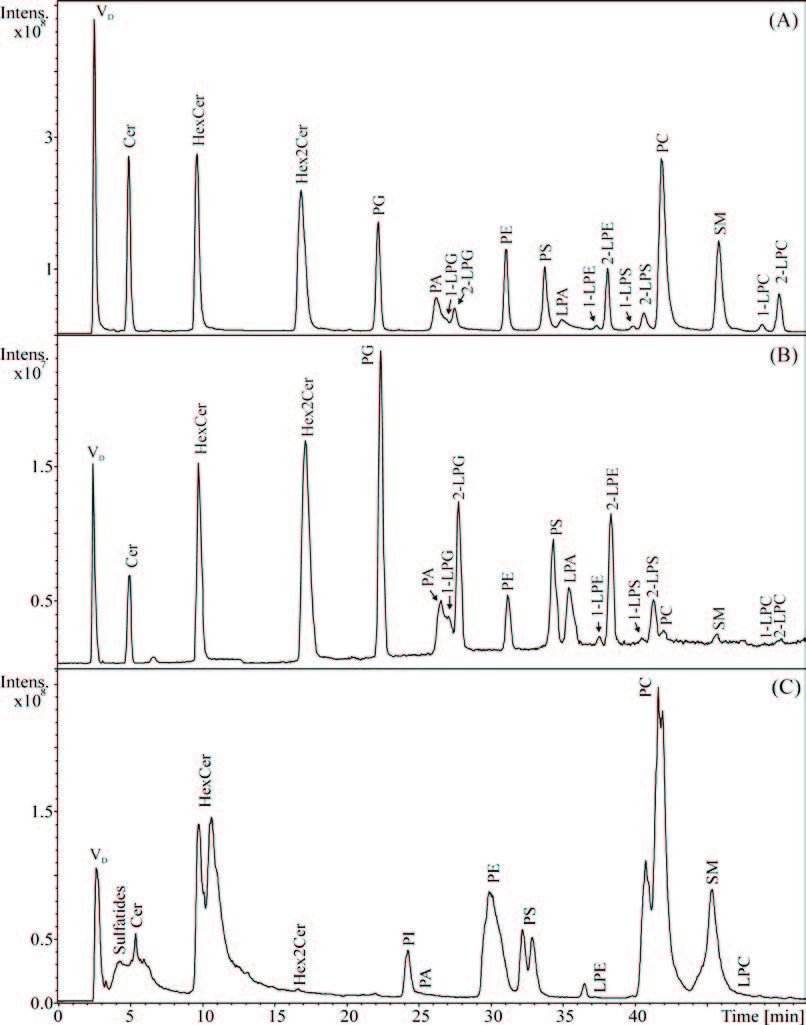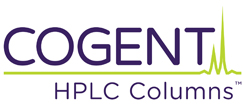Separation of different classes in porcine brain extract.
Phospholipids are an important group of biological compounds. Their separation and using LCMS can be difficult to achieve due to MS incompatibility of reagents typically required in the mobile phase.
In this work, phosphatidic acids, phosphatidylserines, and their lyso derivatives were separated and detected in an LCMS method.
Figures A and B demonstrate how the analytes can be detected in either positive or negative mode. Figure C shows the applicability of the technique to a real world sample, a porcine brain extract.

Peaks:
Various classes of phospholipids Shown Above
Figures:
A: Lipid standard mixture, positive mode
B: Lipid standard mixture, negative mode
C: Porcine brain extract, negative mode
Method Conditions
Column: Cogent Diamond Hydride™, 4μm, 100Å
Catalog No.: 70000-15P
Dimensions: 4.6 x 150mm
Mobile Phase:
—A: DI water / 40 mM ammonium formate, adjusted to pH 4 with formic acid
—B: Acetonitrile / Formic Acid
Gradient:
| Time (minutes) | %B |
| 0 | 99.7 |
| 60 | 75 |
Temperature: 40˚C
Injection vol.: 3.0μL
Flow rate: 1.0mL / minute
Detection: Agilent 1290 ESI – POS/NEG – Esquire 3000 ion trap mass spectrometer
Note: This application note was produced from data conducted by the following authors: E. Cífková, R. Hájek, M. Lísa, M. Holčapek, Hydrophilic interaction liquid chromatography– mass spectrometry of (lyso)phosphatidic acids, (lyso)phosphatidylserines and other lipid classes, J. Chromatogr. A (2016), in press.
Attachment
No 350 Phospholipids Analyzed with HPLC with LCMS pdf 0.3 Mb Download File


